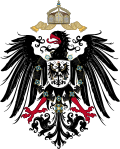| Order of Saint Elizabeth St. Elisabethenorden | |
|---|---|
 Badge and ribbon of the order | |
| Awarded by Electoral Palatine Electorate of Bavaria, Kingdom of Bavaria | |
| Type | ladies order |
| Royal house | House of Wittelsbach |
| Eligibility | Catholic religion, seize quartiers |
| Status | defunct |
| Founder | Electress Elisabeth Auguste |
| Grades | Dame Honorary Dame |
| Statistics | |
| First induction | 1766 |
| Last induction | 1976 |
| Total inductees | 191 Dames 31 Honorary Dames |
| Precedence | |
| Next (higher) | Royal Order of Saint Hubert |
| Next (lower) | Royal Order of Max Joseph |
| Equivalent | Royal Order of Saint George for the Defense of the Immaculate Conception |
| Ribbon bar of the order | |
The Order of Saint Elizabeth was an chivalric and charitable order for women in the Electoral Palatinate and the Kingdom of Bavaria.

